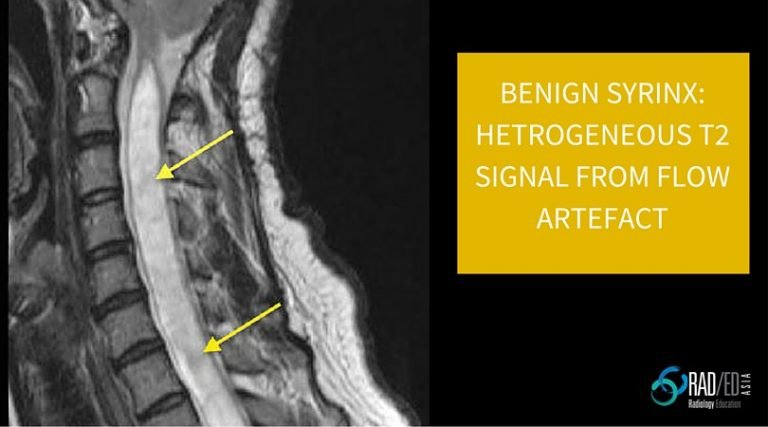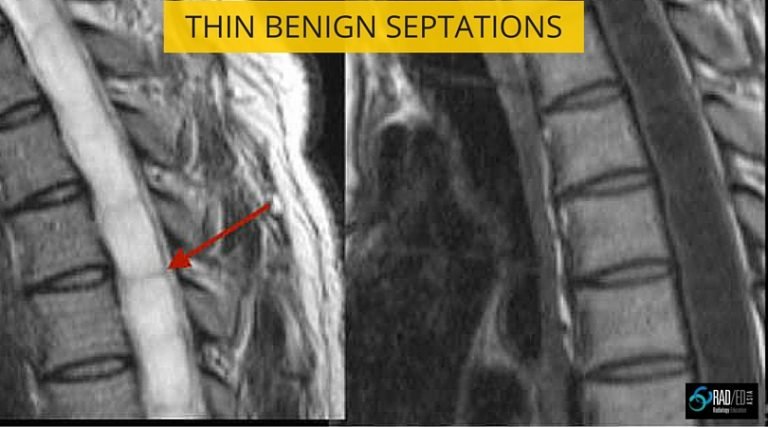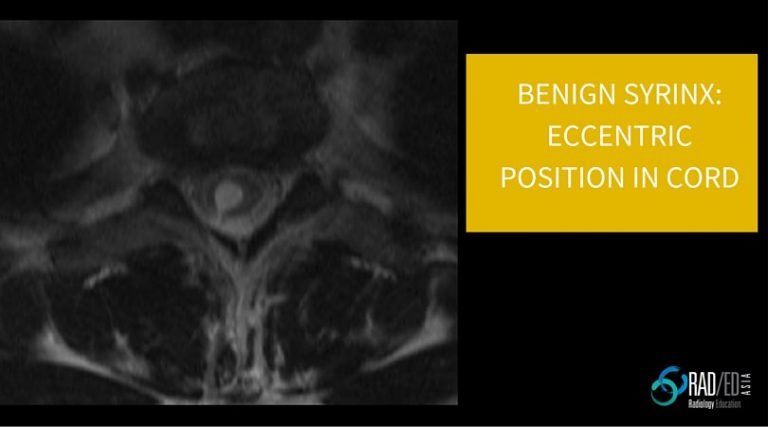When we think of a benign syrinx we think that it should be uniformly high signal on T2 and smooth. But you can get variations in the appearance of a benign syrinx that brings doubt as to whether it is benign or is possibly malignant. What are these variations, and how do we confirm that it is benign?
Variations
1. Hetrogeneous T2 signal: A large syrinx can have a heterogeneous T2 signal which is due to flow artefact within the syrinx.
2. Septations: Again with a larger benign syrinx there can be considerable septation within the syrinx. However, there shouldn’t be nodularity and the septations shouldn’t enhance.
3. Eccentric position in cord: A benign syrinx can be central in the cord or eccentric in position.
4. Increasing size: An increase in size over time doesn’t mean its malignant. As long as there are no signs of malignancy, an increase in size is not an indicator of malignancy.
As long as there are no other feature of malignancy, such as cord oedema, enhancement, nodularity/ mass, the above findings should not be of concern for malignancy.
A very important point is that on the first presentation, even if the syrinx looks completely benign, you must give contrast. Tumours such as hemangioblastomas can present as a benign appearing syrinx on non contrast scans, but on contrast administration, will show a tiny nodular area of enhancement. Once you have shown it to be benign on the first scan, follow up scans don’t require contrast.
More information on upcoming MRI Workshops at this link.
#radedasia #mri #mskmri #radiology





